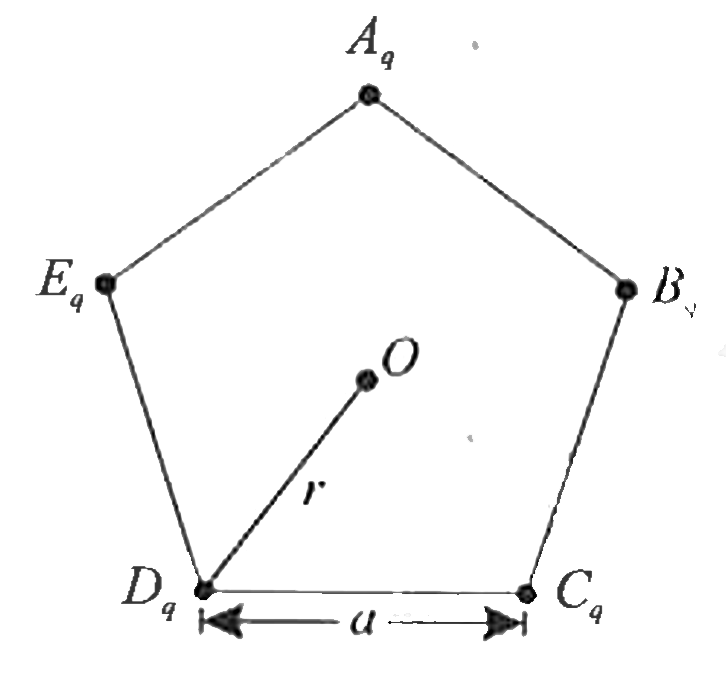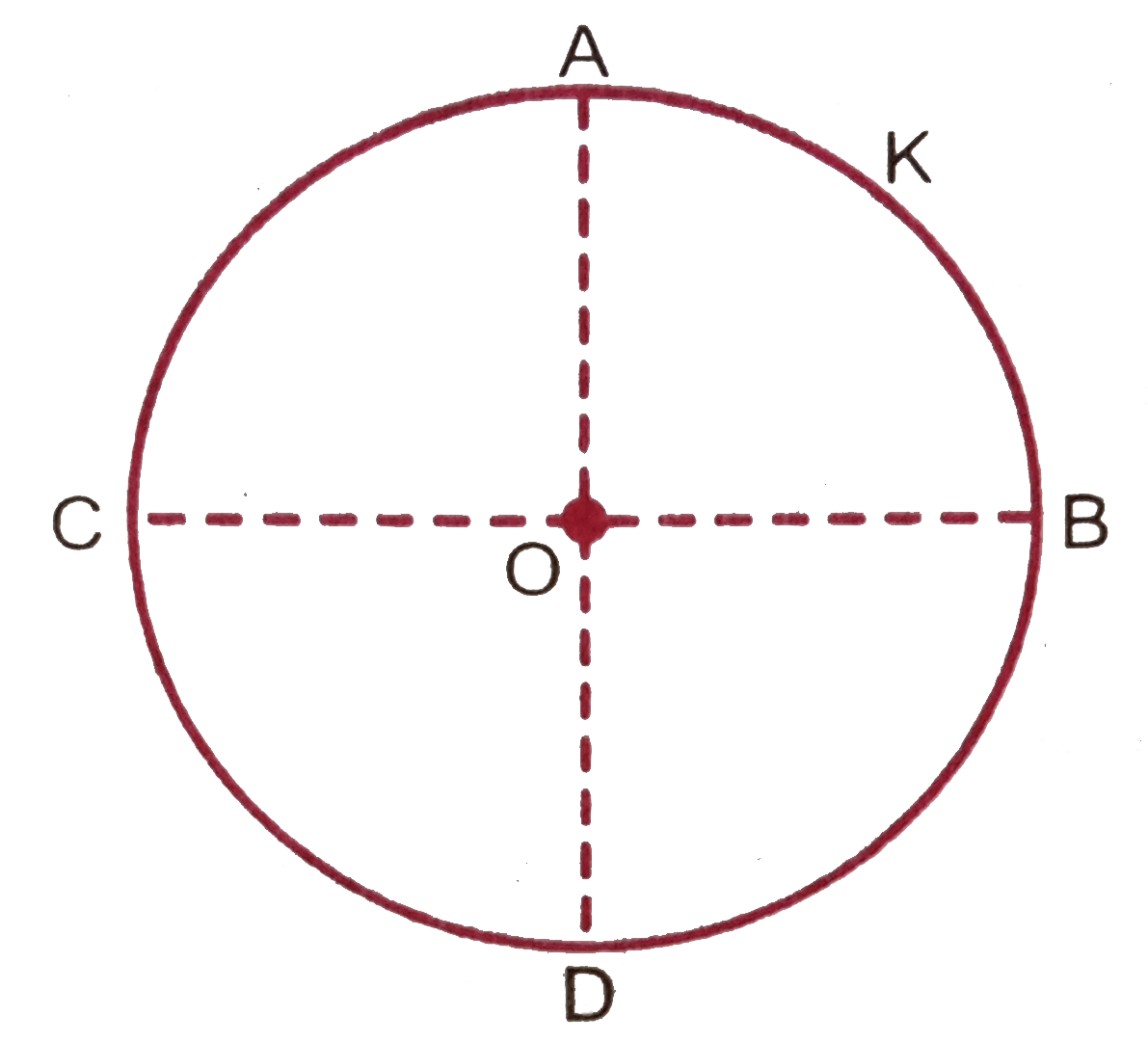In question number 45, what will be the electric field at O if the charge q at A is replaced by -q?
q4πε0r2 along OB
2q4πε0r2 along OA
4q4πε0r2 along OC
zero
The correct Answer is:B
If the charge q at A is replaced by -q, it is equivalent to adding charge -2q at A. Therefore, electric field at O, E2=2q4πε0r2 along OA.
Topper's Solved these Questions
- ELECTRIC CHARGES AND FIELDSBOOK - NCERT FINGERTIPSCHAPTER - ELECTRIC CHARGES AND FIELDSEXERCISE - MCQs
2 Videos
- ELECTRIC CHARGES AND FIELDSBOOK - NCERT FINGERTIPSCHAPTER - ELECTRIC CHARGES AND FIELDSEXERCISE - Electric Field Lines
12 Videos
- ELECTRIC CHARGES AND FIELDSBOOK - NCERT FINGERTIPSCHAPTER - ELECTRIC CHARGES AND FIELDSEXERCISE - Force Between Multiple Charges
5 Videos
- DUAL NATURE OF RADIATION AND MATTER BOOK - NCERT FINGERTIPSCHAPTER - DUAL NATURE OF RADIATION AND MATTER EXERCISE - Assertion And Reason
15 Videos
- ELECTROMAGNETIC INDUCTIONBOOK - NCERT FINGERTIPSCHAPTER - ELECTROMAGNETIC INDUCTIONEXERCISE - Assertion And Reason
15 Videos
Similar Questions
Five charges, q each are placed at the corners of a regular pentagon of side a. (Refer the adjoining figure)
(a) (i) What will be the electric field at O, if the centre of the pentagon?
(ii) What will be the electric field at O if the charge from one of the corners (say A) is removed?
(iii) What will be the electric field at O if the charge q at A is replaced by -q?
(b) How would your answer to (a) be affected if pentagon is replaced by n-sided regular polygon with charge q at each of its corners?

View SolutionFive charges, q each are placed at the coreners of a regular pentagone of side.

(a) (i) What will be the electric field at O, the centre of the pentagon ?
(ii) What will be the electric field 0 if the charge from one of the corners (say A) is removed ?
(iii) What will be the electric field at 0 if the charge q at A is replaced by −q ?
(b) How would your answer to (a) be affected if pentagon is replaced by n-sided regular polygon with charge q at each of its coreners ?
View Solution
Knowledge Check
In question number 45, what will be the electric field at centre O, if the charge from one of the corners (say A) is removed?
Aq4πε0r2 along OAB2q4πε0r2 along OBCq24πε0r2 along OCD2q4πε0r2 along OAIn question number 45, what will be the electric field at centre O, if the charge from one of the corners (say A) is removed?
Aq4πε0r2 along OAB2q4πε0r2 along OBCq24πε0r2 along OCD2q4πε0r2 along OAA thin conducting ring of radius R is given a charge +Q, Fig. The electric field at the center O of the ring due to the charge on the part AKB of the ring is E. The electric field at the center due to the charge on part ACDB of the ring is
 A3E along KOBE along OKCE along KOD3E along OK
A3E along KOBE along OKCE along KOD3E along OK
Five charges, q each are placed at the corners of a regular pentagon of side a.
(i) What will be the electric field at O if the charge from one of the corners (say A) is removed ?
(ii) What will be the electric field at O if the charge gat A is replaced by -q?
View SolutionFive charges, q each are placed at the corners of a regular pentagon of side a. (Refer the adjoining figure)
(a) (i) What will be the electric field at O, if the centre of the pentagon?
(ii) What will be the electric field at O if the charge from one of the corners (say A) is removed?
(iii) What will be the electric field at O if the charge q at A is replaced by -q?
(b) How would your answer to (a) be affected if pentagon is replaced by n-sided regular polygon with charge q at each of its corners?

View SolutionA test charge q is made to move in the electric field of a point charge +Q along a closed path as shown in figure. What is the work done ?

View SolutionA thin conducting ring of radius R is given a charge +Q, Fig. The electric field at the center O of the ring due to the charge on the part AKB of the ring is E. The electric field at the center due to the charge on part ACDB of the ring is

View SolutionTwo points charges q and -2q are placed some distance d apart. If the electric field at the location of q is E, that at the location of -2q is
View Solution
